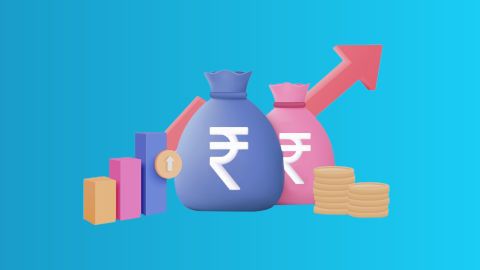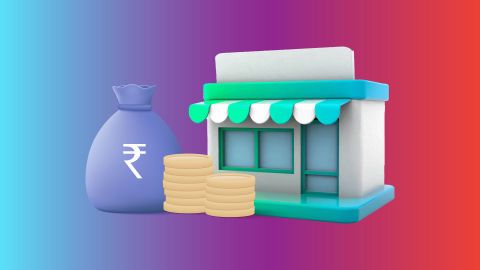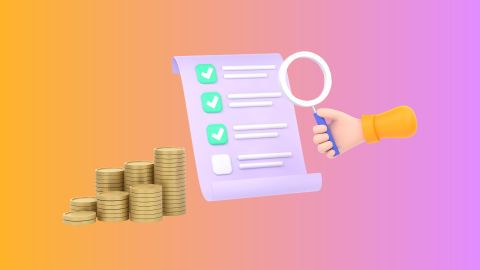Key facts about the PM SVANidhi Yojana
Scheme name |
PM SVANidhi Yojana |
Executing ministry |
Ministry of Housing and Urban Affairs (MoHUA), Government of India |
Scheme launch date |
June 01, 2020 |
Scheme extension |
Extended up to December 2024 |
Beneficiaries |
Street hawkers vending in urban regions as on and before March 24, 2020 |
Loan amount offered |
Up to Rs. 10,000 |
Interest rate |
7% p.a. |
Salient features of PM SVANidhi scheme
- Purpose: Provides affordable loans to street vendors to help them restart businesses affected by COVID-19. Along with the PM SVANidhi Scheme, you can also explore the Pradhan Mantri MUDRA Yojana for other financial assistance options aimed at entrepreneurs.
- Loan amount: Offers collateral-free working capital loans up to Rs. 10,000.
- Interest subsidy: Provides an interest subsidy of 7% per annum on timely/early repayment of the loan.
- Repayment tenure: Loans are repayable in monthly instalments over a period of one year. By repaying on time, you can also increase your eligibility for further loans, as you will build a strong credit history. Additionally, if you're in the manufacturing sector, you can take advantage of the Make in India scheme to receive support for establishing and growing your business.
- Credit score benefits: Timely repayment enhances the borrower's credit score, making them eligible for higher loans in the future.
- Digital transactions incentive: Encourages digital transactions by offering cashback incentives up to Rs. 1,200 per year.
- Eligibility: Targets over 50 lakh street vendors who were vending on or before March 24, 2020. This is part of a wider effort to encourage economic inclusion, and a great addition for those looking to grow small businesses is the PMEGP, which offers financing support to help establish new enterprises.
Objectives of PM SVANidhi Scheme
- Provide Financial Assistance: The scheme aims to support street vendors in accessing affordable loans to rejuvenate their businesses affected by economic disruptions. It seeks to ensure that vendors can continue their livelihood without financial strain. Another helpful initiative in this regard is the Mudra Loan, which offers a range of loan options to support small business owners in need of financial backing.
- Encourage Digital Transactions: By promoting digital payments, the scheme aims to integrate street vendors into the formal financial system and reduce their dependency on cash transactions. Incentives such as cashback offers are provided to encourage consistent use of digital payment methods.
- Facilitate Formal Credit: The scheme helps street vendors establish a credit profile which is crucial for accessing formal financial channels in the future. Building a credit history will enable vendors to secure larger loans and financial services more readily.
Background of the PM SVANidhi scheme
- Launch date: Introduced on June 1, 2020, by the Ministry of Housing and Urban Affairs.
- COVID-19 response: Designed as an economic relief measure for street vendors affected by the COVID-19 pandemic.
- Target beneficiaries: Aims to assist over 50 lakh street vendors, including hawkers and rehriwala, across urban and peri-urban areas.
- Government initiative: Part of the Atmanirbhar Bharat Abhiyan, focused on supporting the livelihoods of informal sector workers.
- Financial inclusion: Enhances financial inclusion by providing working capital loans and bringing street vendors into the formal financial system.
- Empowerment: Promotes self-reliance among street vendors through easy access to credit and support for digital transactions.
Benefits of PM SVANidhi Scheme
- Quick and Easy Credit: The scheme offers a streamlined application process that allows quick access to funds, ensuring that vendors can immediately address their financial needs. These loans are designed to be accessible with minimal procedural delays. For vendors looking for larger loan amounts to expand their business, the PM Standup India scheme can be a great option.
- Interest Subsidy: Vendors who repay their loans on time are eligible for a 7% interest subsidy, which reduces the cost of borrowing and encourages timely repayment. This subsidy is directly credited to the borrower's bank account, further easing their financial burden.
- Digital Incentives: To further the use of digital transactions, the scheme offers annual cashback up to Rs. 1,200, rewarding vendors for adopting digital payment systems. This initiative not only supports vendors financially but also promotes a shift towards a digital economy.
PM SVANidhi Loan Interest Rate
The PM SVANidhi Scheme offers a subsidised interest rate of 7% per annum. This rate is determined in accordance with prevailing loan interest rates provided by various institutions, including Scheduled Commercial Banks (SCBs), Regional Rural Banks (RRBs), Small Finance Banks (SFBs), Self-Help Groups (SHGs), and Cooperative banks. However, the interest rate may vary if the loan is obtained from entities such as Non-Banking Financial Company-Micro Finance Institutions (NBFC-MFIs) or Non-Banking Financial Companies (NBFCs), depending on RBI guidelines. In cases where non-NBFC lenders are not governed by RBI guidelines, interest rates align with those set for NBFC-MFIs by the RBI.
Eligibility criteria of PM SVANidhi Scheme
- Street vendors holding a Certificate of Vending or Identity Card issued by Urban Local Bodies (ULBs).
- Vendors identified in the ULB survey but who have not yet received a Certificate of Vending or Identity Card.
- Street vendors not included in the ULB survey or who started vending after the survey, provided they have a Letter of Recommendation (LoR) from the ULB or Town Vending Committee (TVC).
- Vendors from nearby development, peri-urban, or rural areas vending within the ULB’s limits, with a Letter of Recommendation (LoR) from the ULB or TVC.
Documents required to apply for PM SVANidhi Scheme
For the first loan application
For category A and B vendors:
Certificate of Vending (CoV)
Identity Card issued by the local authority
For category C and D vendors:
Letter of Recommendation (LoR) from the Urban Local Body (ULB)
KYC documents (required along with CoV, ID card, or LoR):
Aadhaar Card
Voter ID
Driving Licence
MNREGA Job Card
PAN Card
Additional documents for vendors applying with LoR:
Copy of Account Statement or Bank Passbook
Membership Card or any proof of vendor association
Any document supporting the vendor claim
Request letter to the ULB
For second loan application
- Document confirming closure of the first loan
How to apply for PM SVANidhi
Understand which documents and information are needed to complete the Loan Application Form (LAF) for the scheme.
Gather all required details before starting the application to avoid delays.
Make sure your mobile number is linked to your Aadhaar, as this is needed for e-KYC and Aadhaar verification during the online application.
Linking your mobile to Aadhaar also helps in getting a Letter of Recommendation from the Urban Local Body (ULB), if required.
It will also assist you in availing future benefits under government welfare schemes.
Check your eligibility based on the scheme rules — street vendors fall into one of four categories.
Identify your category and keep the necessary documents and information ready accordingly.
How to apply for PM SVANidhi
Before starting the online application process, follow these three essential steps:
Step 1: Understand the application requirements
Review the list of documents and information needed to complete the Loan Application Form (LAF) under the scheme. Make sure all required details are prepared before beginning the online application.
Step 2: Ensure your Aadhaar is linked with your mobile number
It is important to verify that your Aadhaar is linked to your current mobile number. This is required for e-KYC or Aadhaar authentication during the online process. Linking your number will also make it easier to obtain a Letter of Recommendation from the Urban Local Body (ULB), if needed, and access other government welfare schemes in the future.
As per UIDAI, updating your mobile number only requires a basic form and no additional documentation. You can visit the UIDAI portal to locate the nearest Aadhaar centre.
Step 3: Check your eligibility category
Street vendors fall into one of four categories under the scheme. Identify your category and gather the necessary documents and details as per the eligibility criteria. This will ensure a smoother application experience.
How to check your PM SVANidhi Loan status online?
To check your PM SVANidhi loan status online, visit the official website pmsvanidhi.mohua.gov.in. Once there, provide your application ID and registered mobile number. This simple process allows applicants to access their loan status conveniently. By entering these details, individuals can stay updated on the progress of their application without hassle. This streamlined online system ensures transparency and ease of access for beneficiaries, empowering them to monitor their PM SVANidhi loan status efficiently and effectively.
Conclusion
The PM SVANidhi Scheme is a vital initiative aimed at supporting street vendors to recover and thrive post-pandemic by providing them with accessible financial solutions. Through its structured approach to loans and subsidies, the scheme not only helps vendors sustain their livelihoods but also encourages them to engage in the formal economy. For vendors looking to expand further, business loans, available through various financial institutions, can provide additional capital to grow their operations. However, understanding the business loan interest rate is crucial to ensuring they choose the right financing options to enhance their economic stability.






